Whether chopping up a Quebec chair or casting a skipping rope in solid silver, the founder of Montreal’s SSSVLL studio dissects design tradition at every turn
Journal
The Interrogation of Everything | Guillaume Sasseville
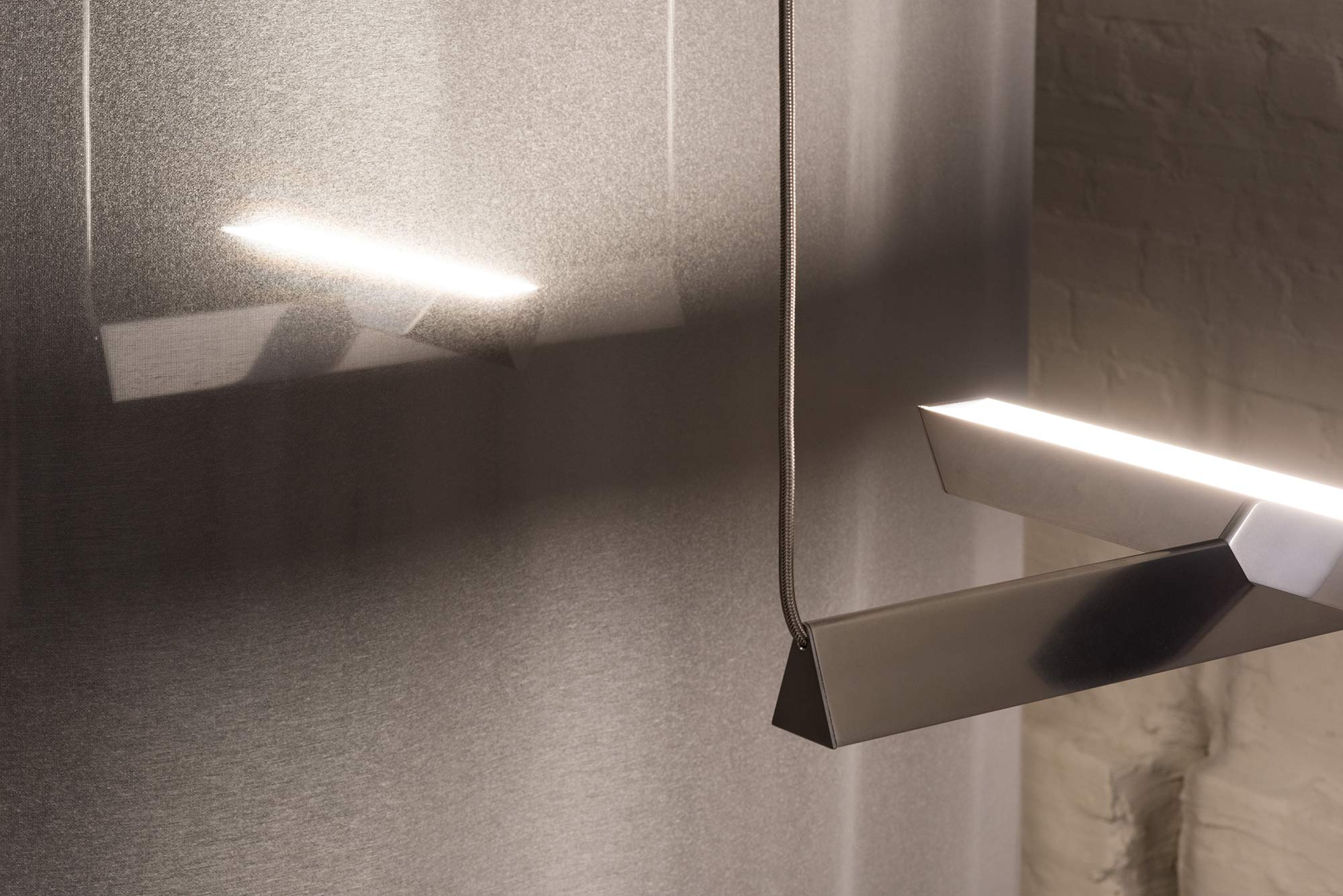
What is the cultural value of the common object? How does the quintessential chair, or diamond ring, or drinking glass infiltrate our memories? More, how do these shapes impact our outlook on the world around us? These are the kinds of questions leading the work of product designer Guillaume Sasseville. The result is a portfolio filled with mind-bogglingly thoughtful creations that have been collected by museums around the world. The award-winning designer behind our Mile light shows us around his Montreal studio and offers reflections on—among other things—chainsaws, illusions, and the humour at the heart of his pieces.
One object brings me to the other, like a sequence.
It started with a gallery in Montreal called Commissaires. They asked a bunch of designers to work on a typical Quebec babiche chair. I decided to cut the chair perfectly into a prism. It was a contrast between this very natural organic texture of the babiche, which I really like, and the perfect precision of the cut.
For me, this was the beginning of working with very simple and common objects. I continued the experimentation on a cheap plastic ring I bought in Chinatown. I cast it with precious metal then cut and polished it. It was about adding value to something that at the start didn’t have any.
Following that, I worked on a common tumbler with the Verre Commun project. It’s a collaboration with a really incredible glass blower, and again it’s all about doing very common things but with amazing craftsmanship so that it becomes something else. You take that glass in your hand, it’s very light, the thickness of the walls are very thin and also the light green colour—it’s almost like a floating colour in the room.
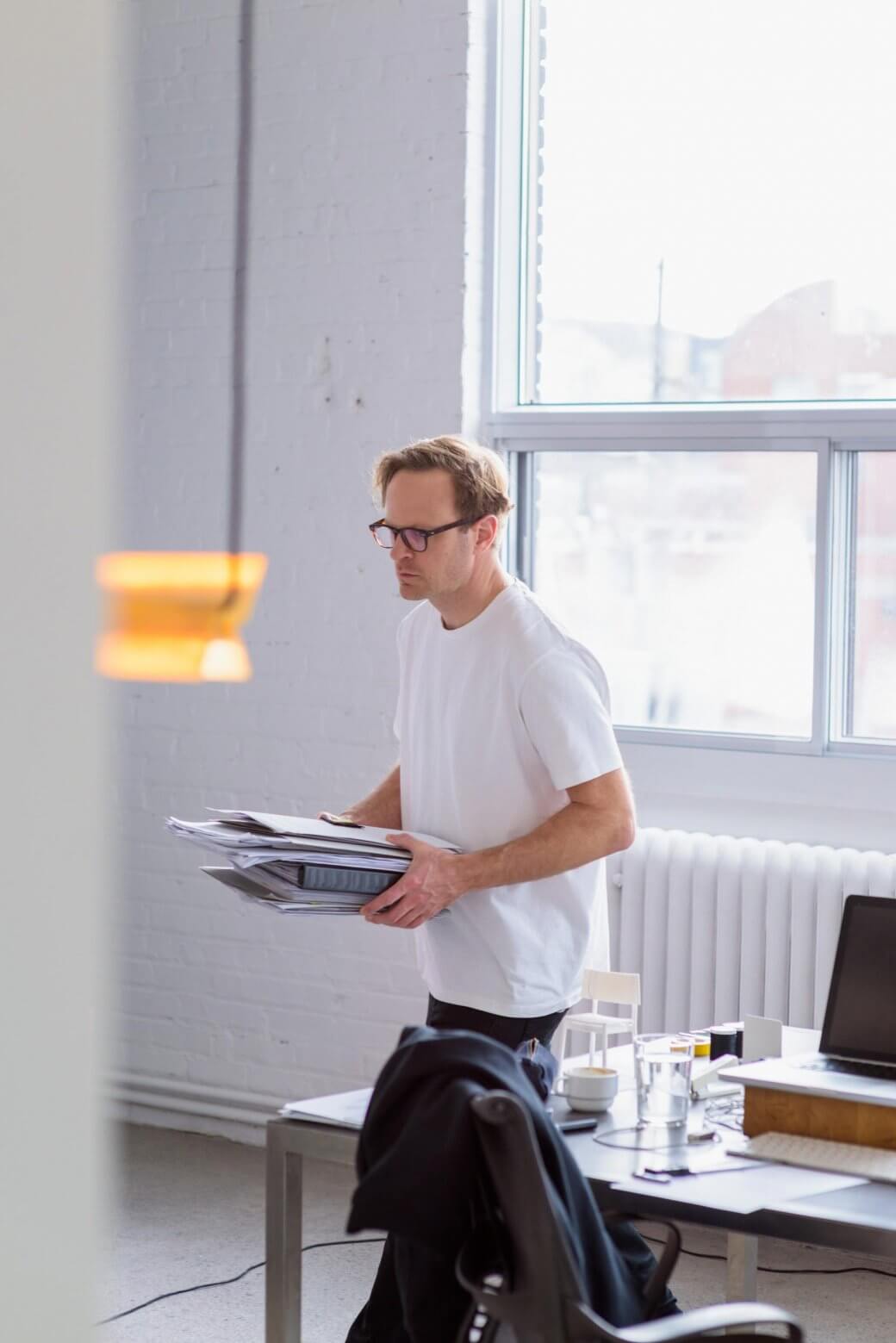
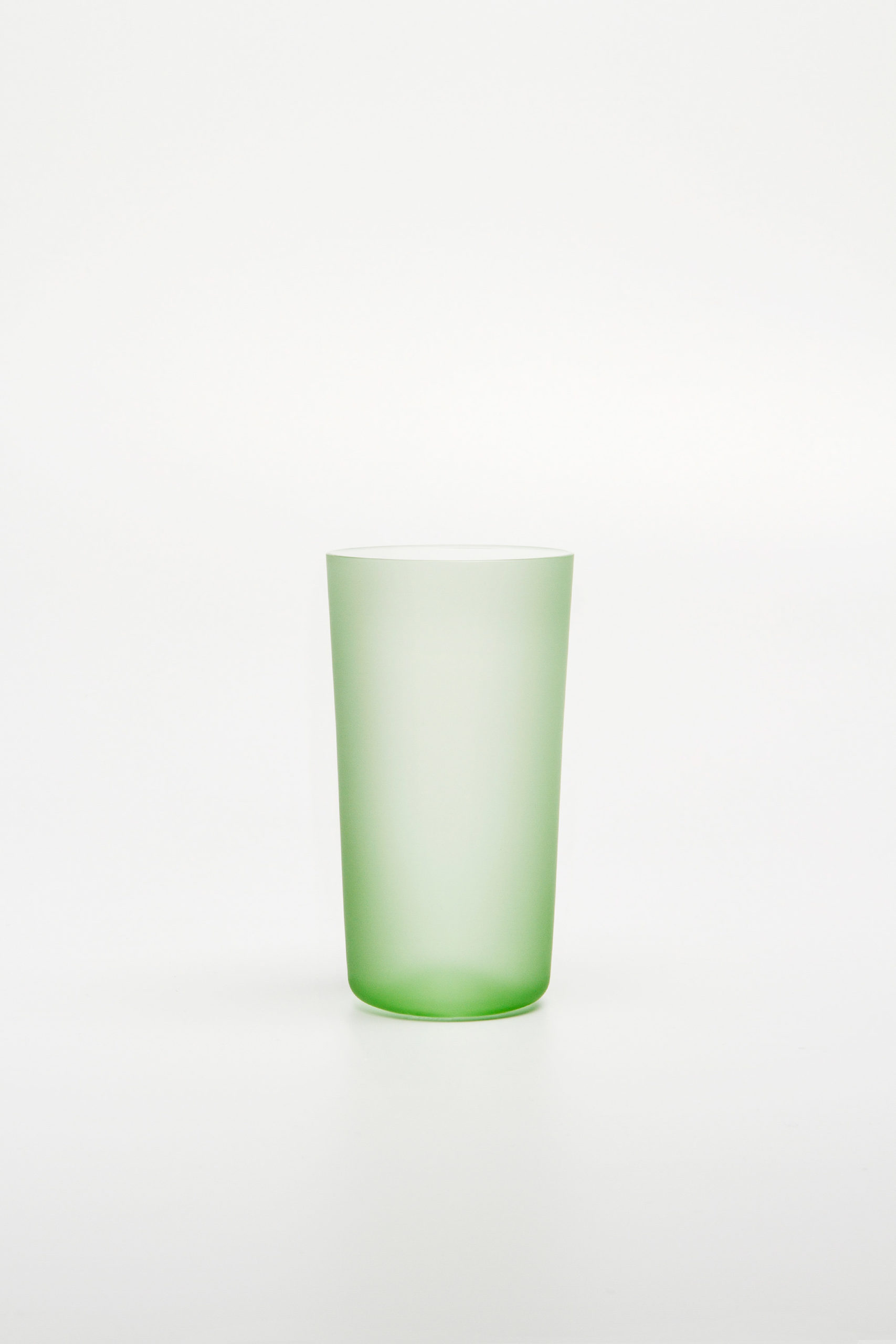
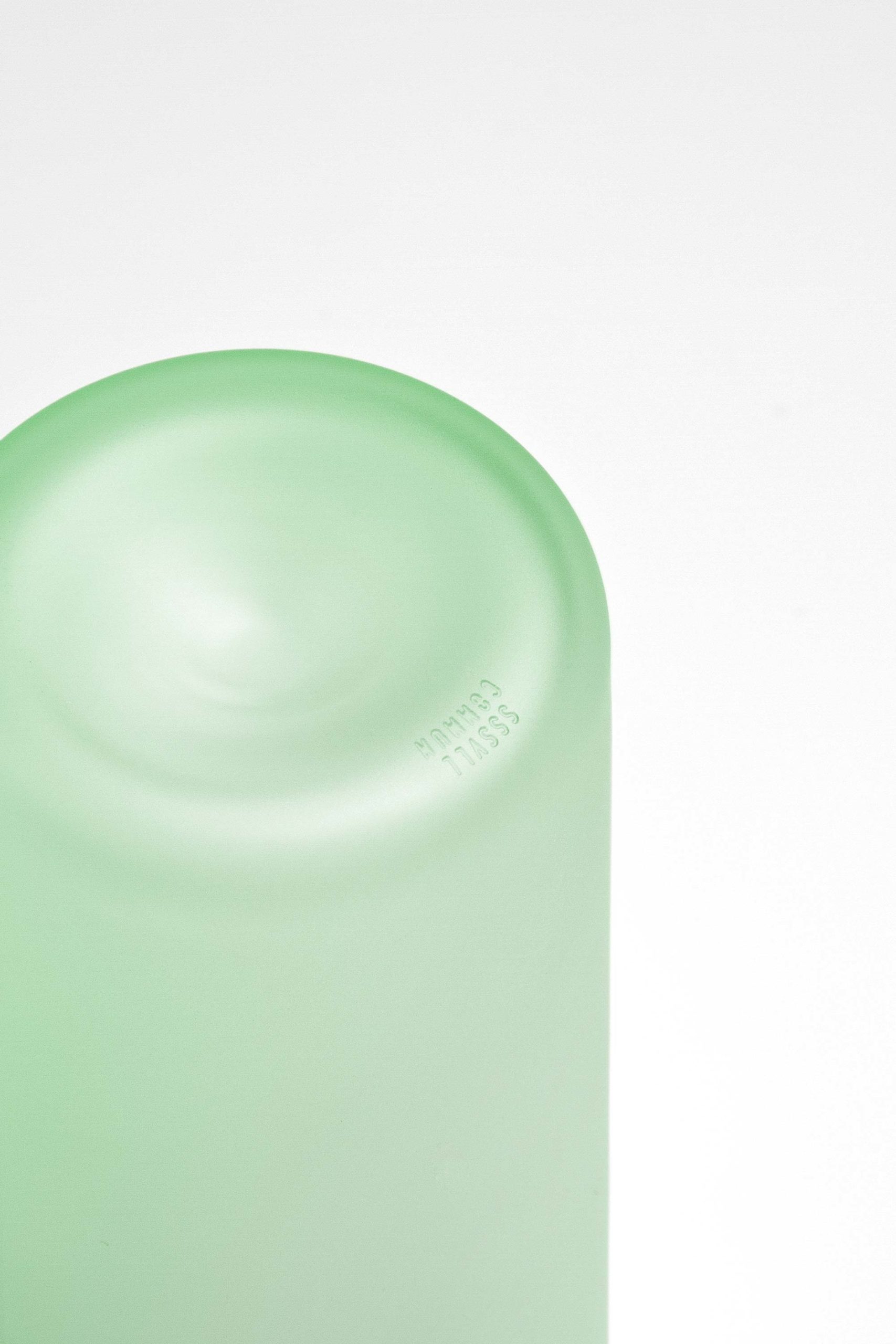
The idea for the Mile came from when I was designing a store space.
To iterate the design I created sprawling computer drawings the size of a football field with dozens of connected buildings—even though I knew I would only use a tiny part of it for the design of the store.
It was crazy but the part that I cropped you know, you feel, that it’s part of all the lines in the bigger drawing. You feel that the line is not coming from nowhere. It’s an idea that I kept and the Mile is actually in the same vein. It’s a huge grid, part of which we erased. What’s left became the lamp.
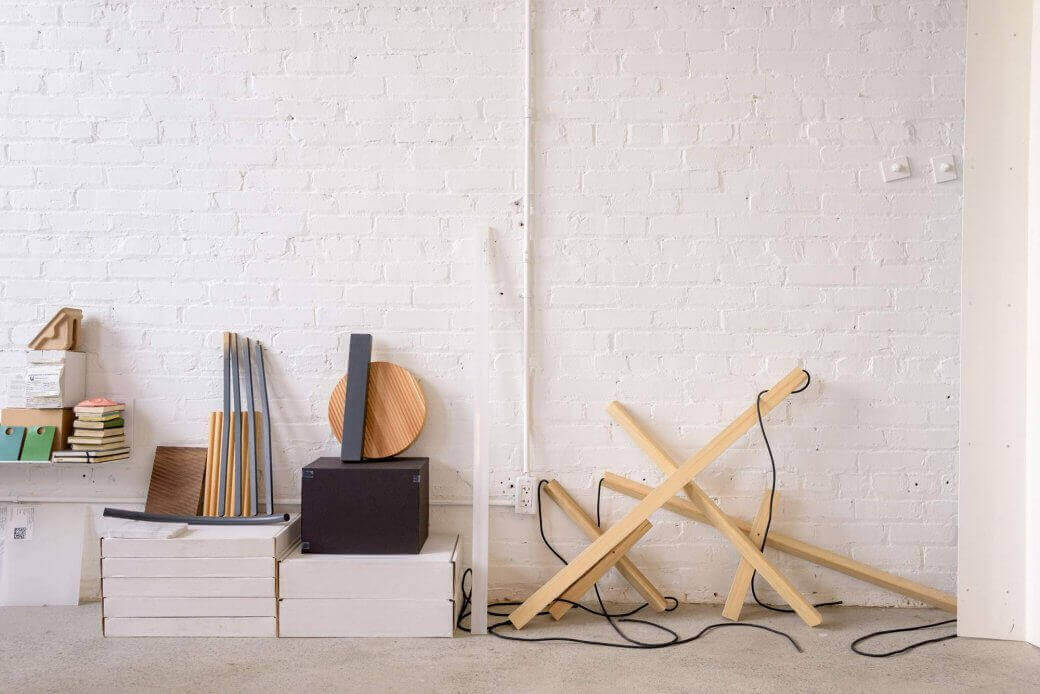
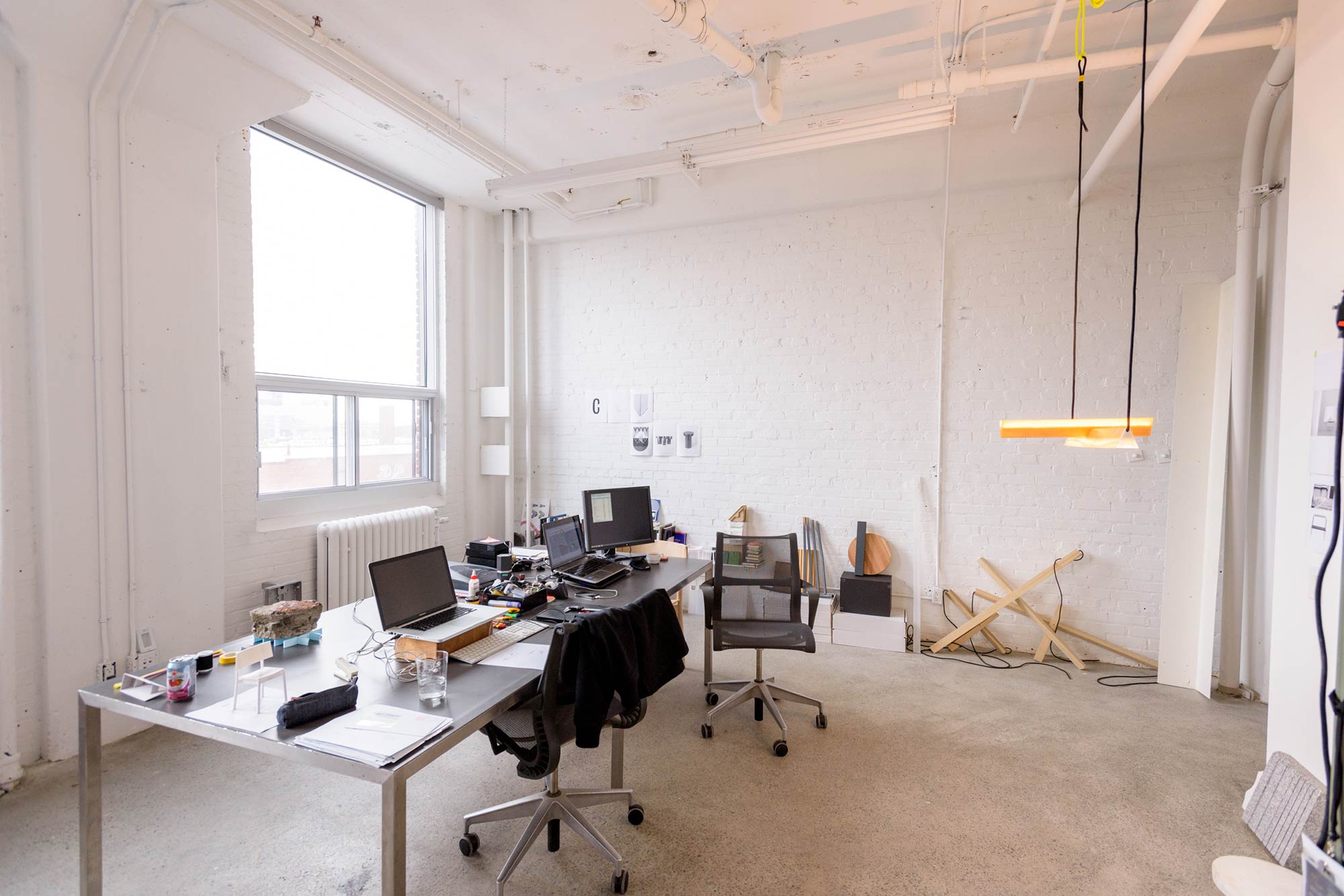
I made the switch from architecture because I wanted to be more hands on—
to cut the distance between myself and the product and to work more directly with the craftspeople and materials involved. The other week I was at the factory working on a chair design. I wasn’t satisfied with the shape of the backrest so I took it off and went straight to the machine, modified it and worked it out this way. That’s what I really like, this spontaneous way of working and that scale of a project.
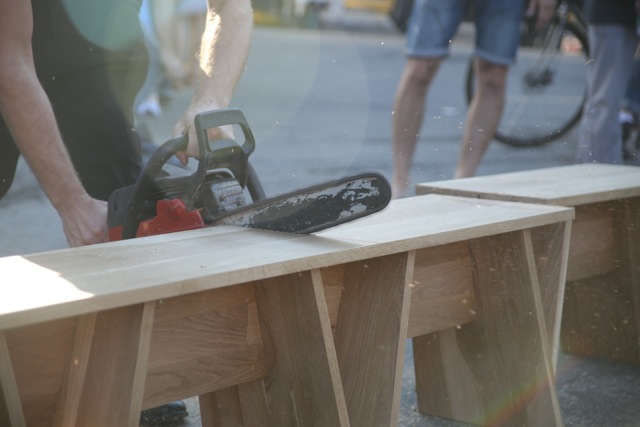
Before the Misc Collection, I had never used a chainsaw. But I discovered I liked the rawness of the tool. I wanted to use it. When we launched the collection here in Montreal, I had my chainsaw and my 16-foot-long bench and I was cutting parts of the bench off for people and selling them—we planned the launch around this hands-on process.
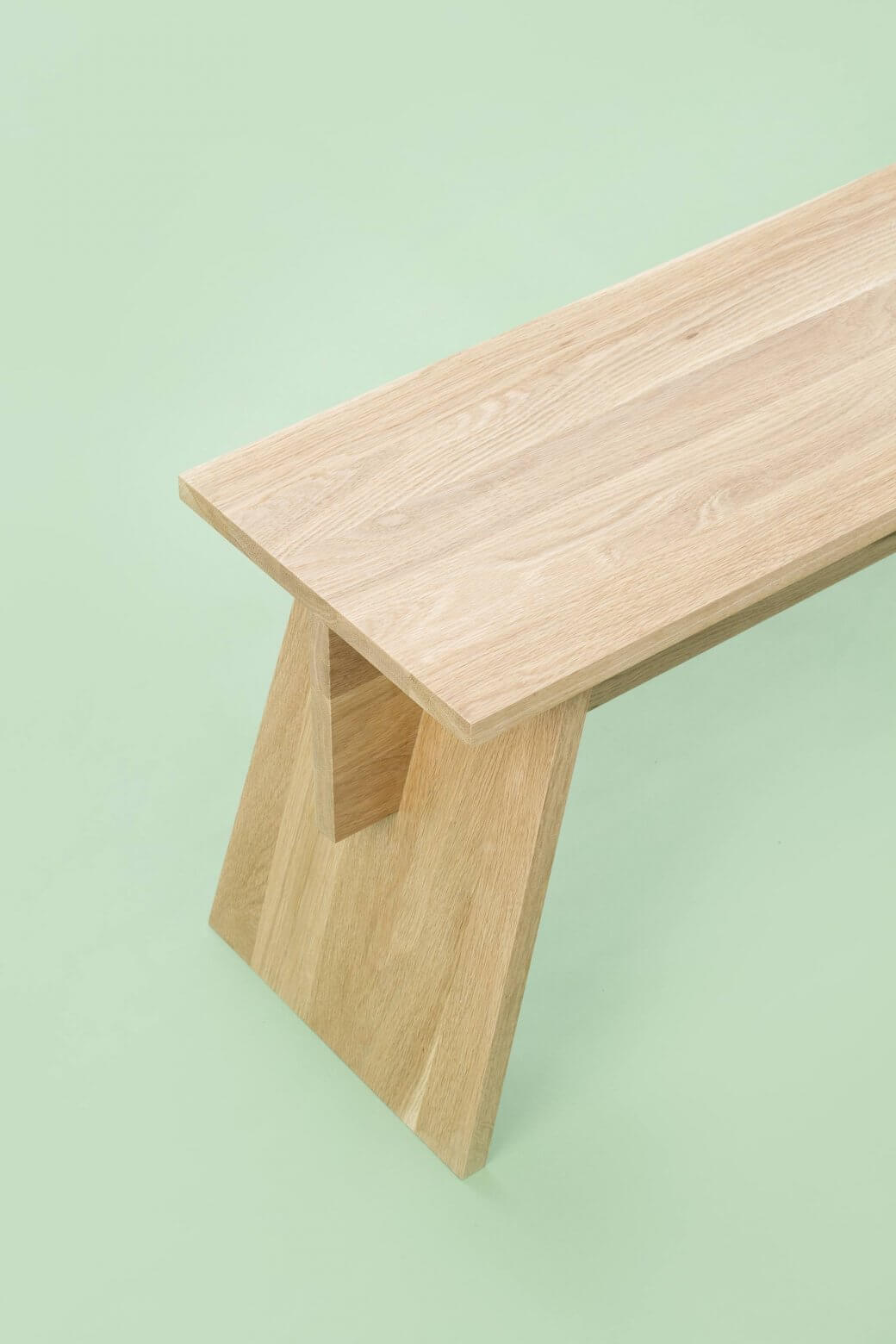
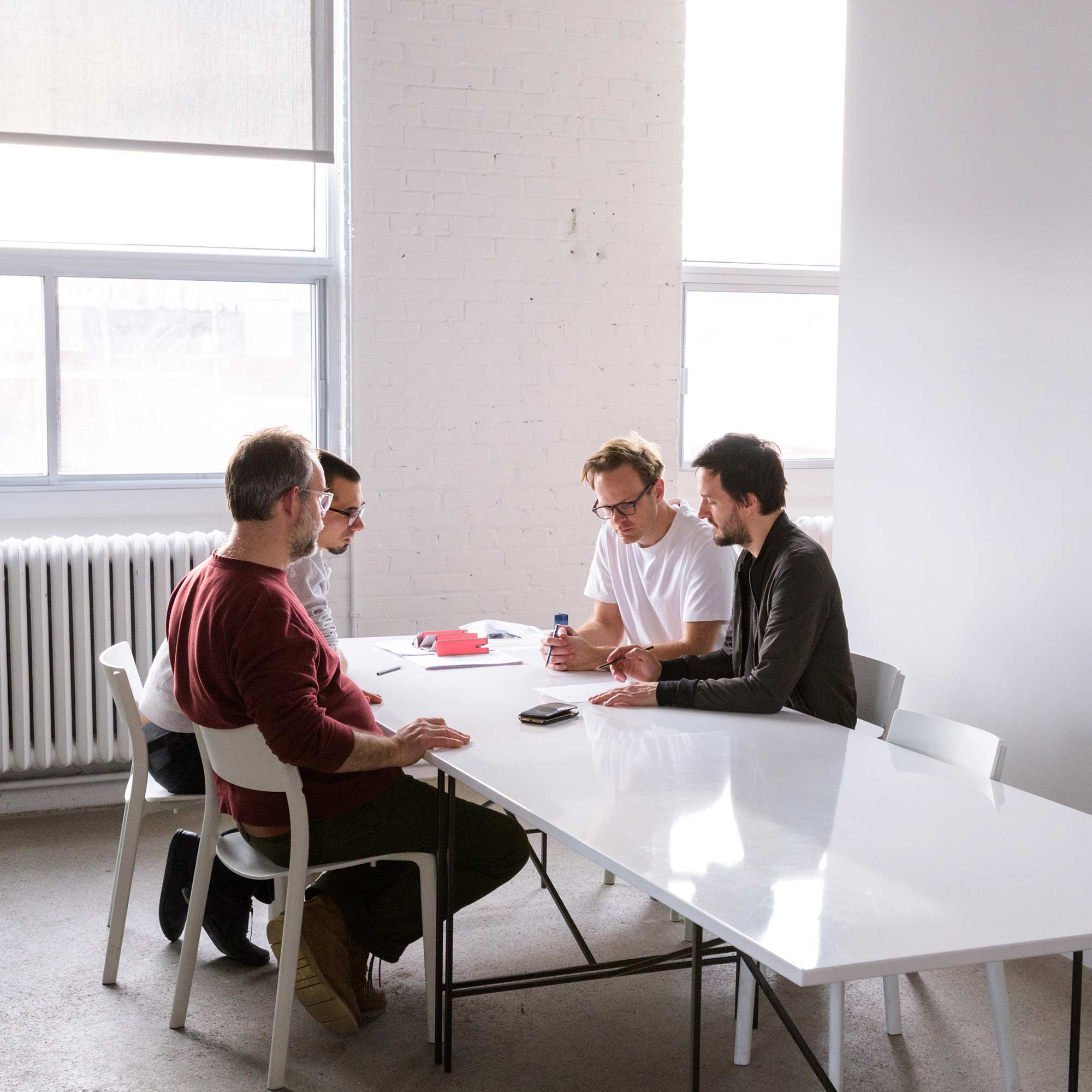
I always want to make something so when you look at it, it’s counterintuitive—
it plays with your senses. Like the common tumbler: there’s an angle when you’re sitting beside the glass that you feel the glass is floating on the top of the table. This is the level of abstraction I like. The Mile is the same—it’s asymmetrical, it’s not supposed to float but it’s floating. There’s this way of going against what it should be, how it should stand in the world.
We worked on a chair recently, in the continuation of the common object. We wanted to design what you remember of a chair. If I ask you what is the most simple chair, you already have in your mind the school chair you had when you were young, or a chair you saw at your grandmother’s place, and you just combine all your memories and this is what we wanted to design. We actually designed this chair! We worked with the detail of the diameter of the legs—from the floor they are bigger than the diameter at the top. You can’t see it, but you feel it.
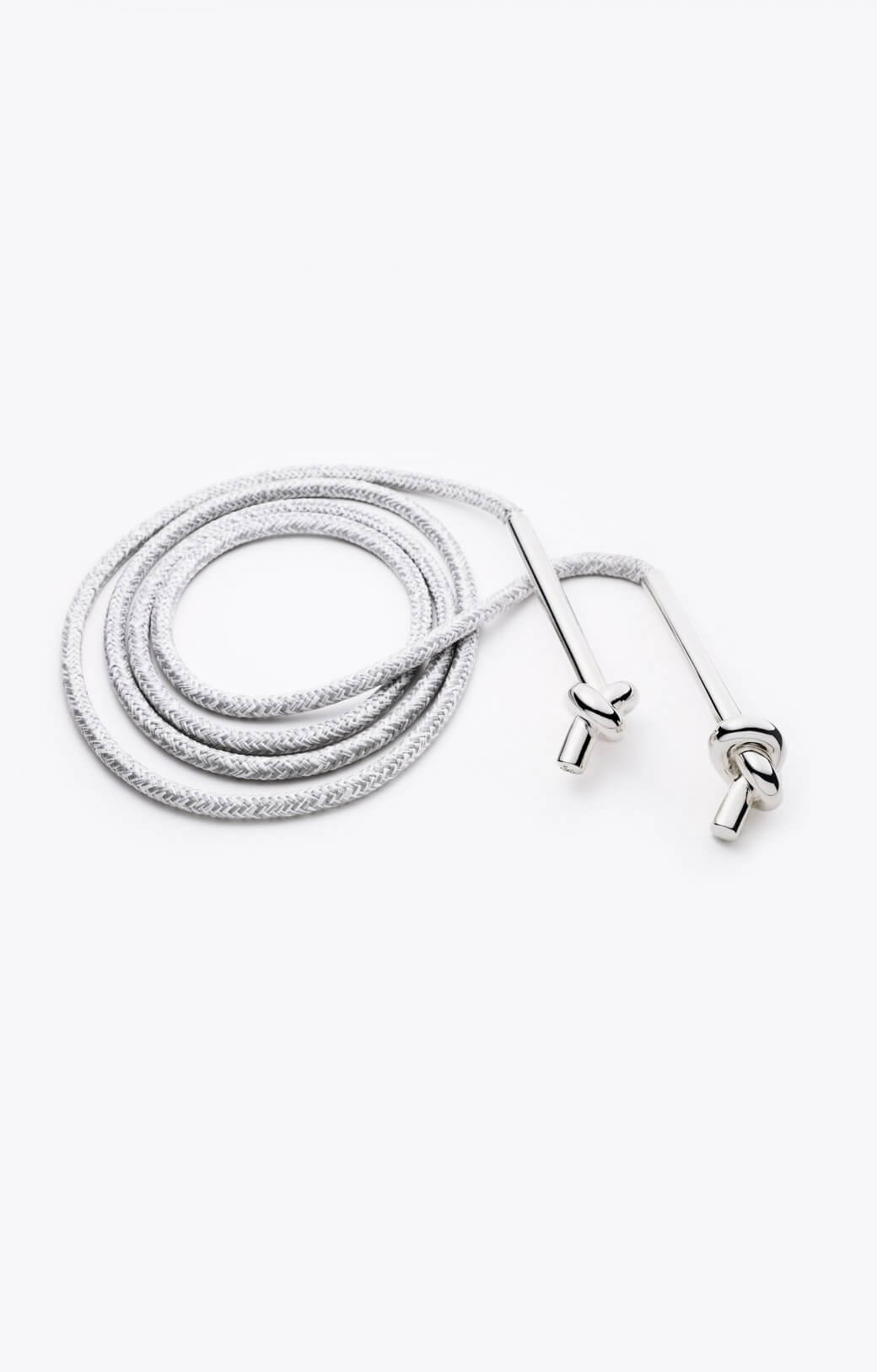
Photos by Arseni Khamzin
Interview by Rory Seydel and Alexandra Caufin